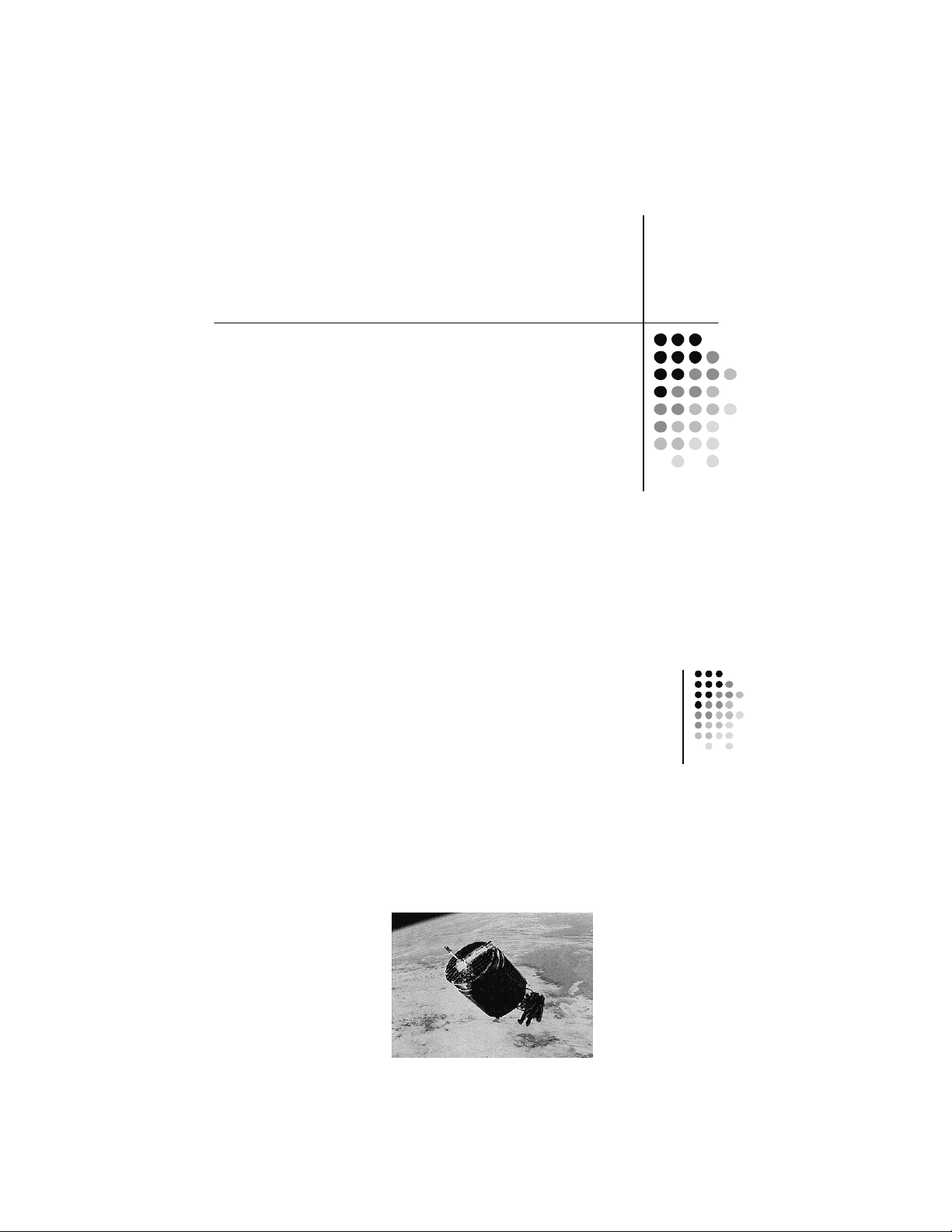
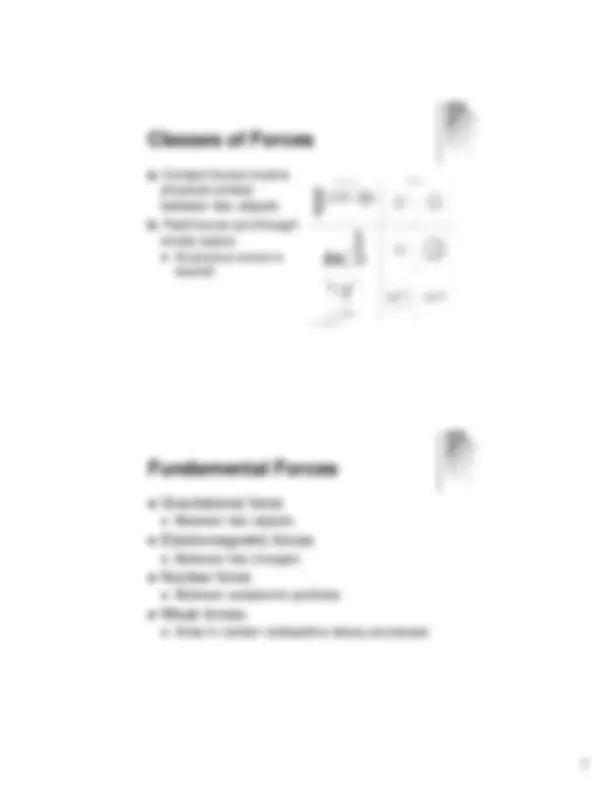
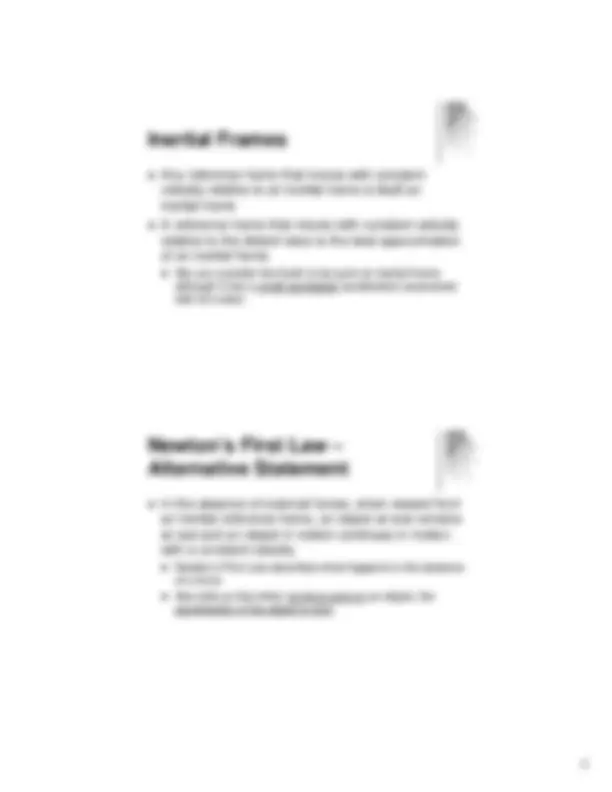
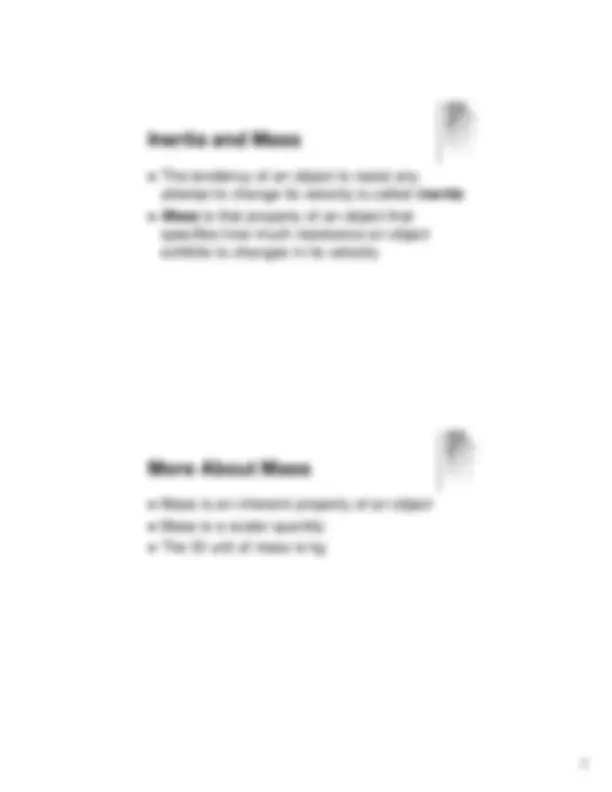
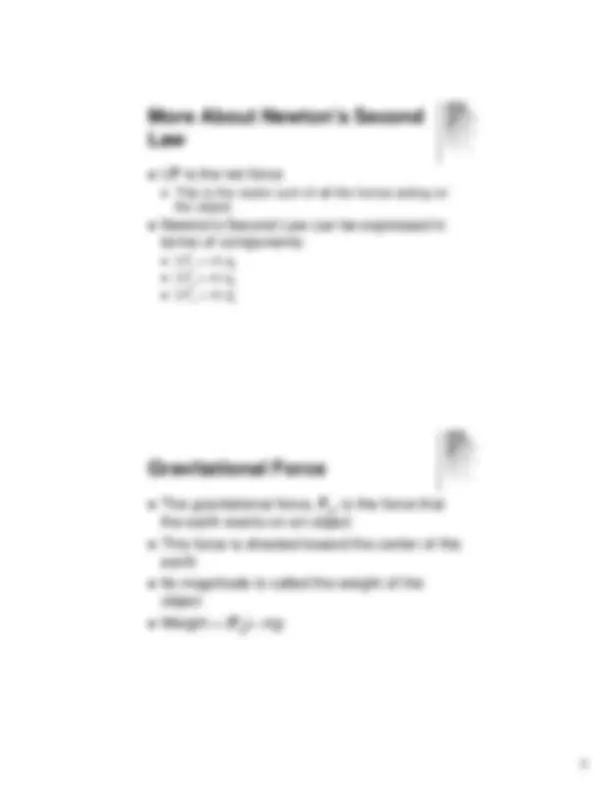
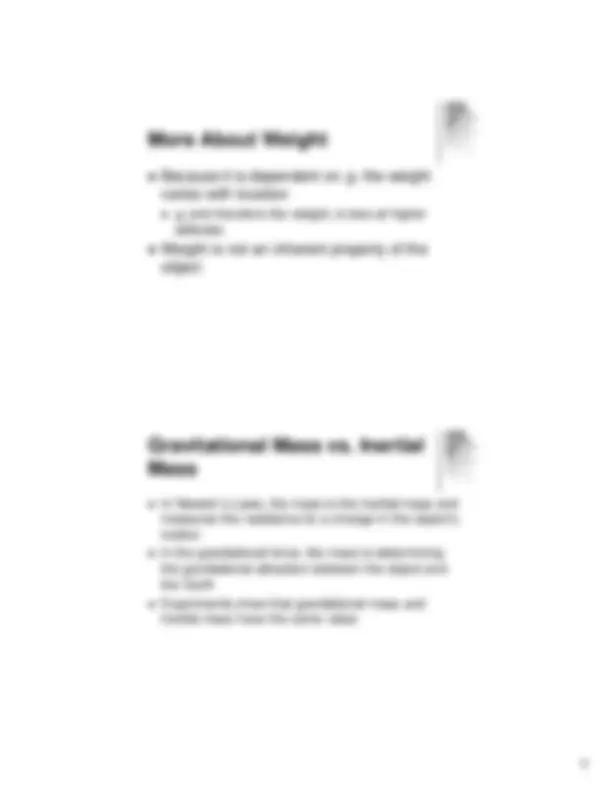
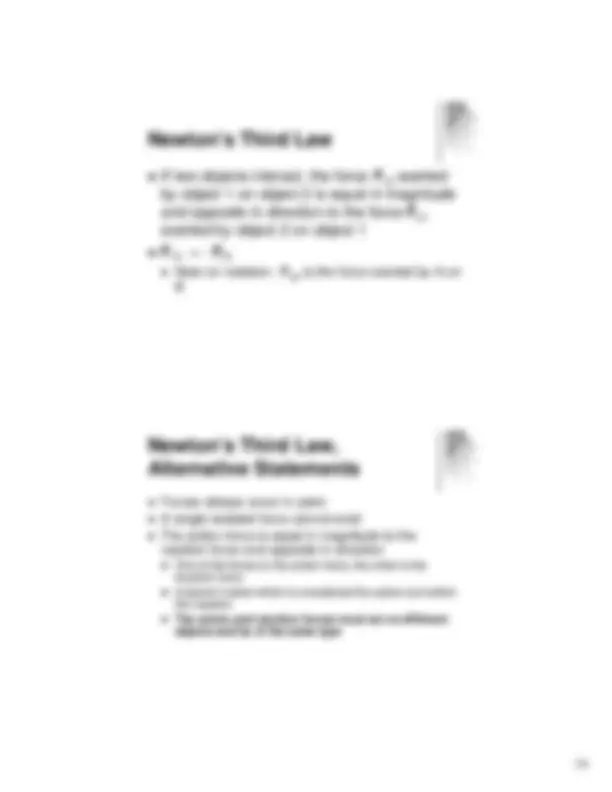
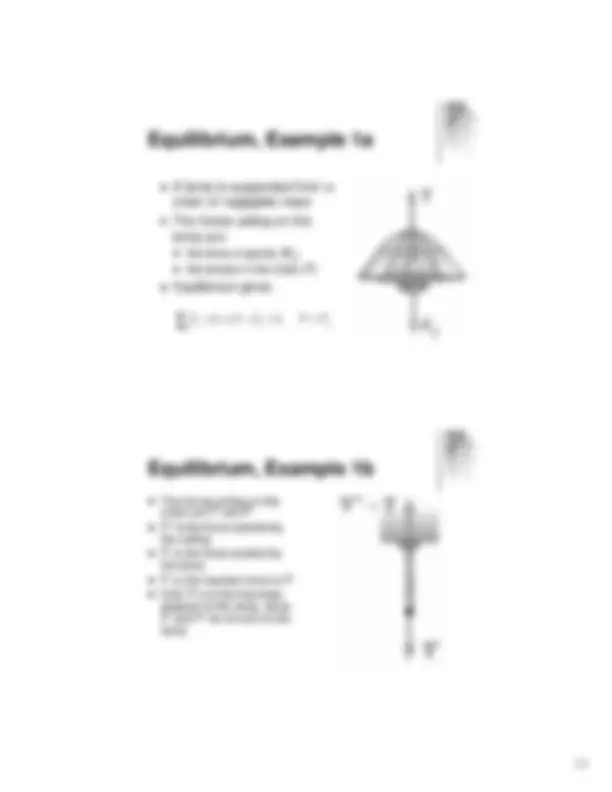
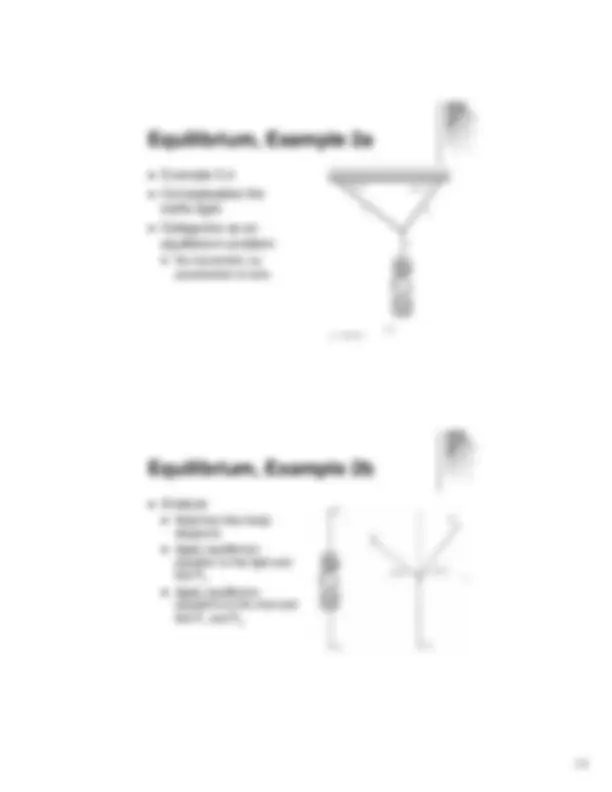
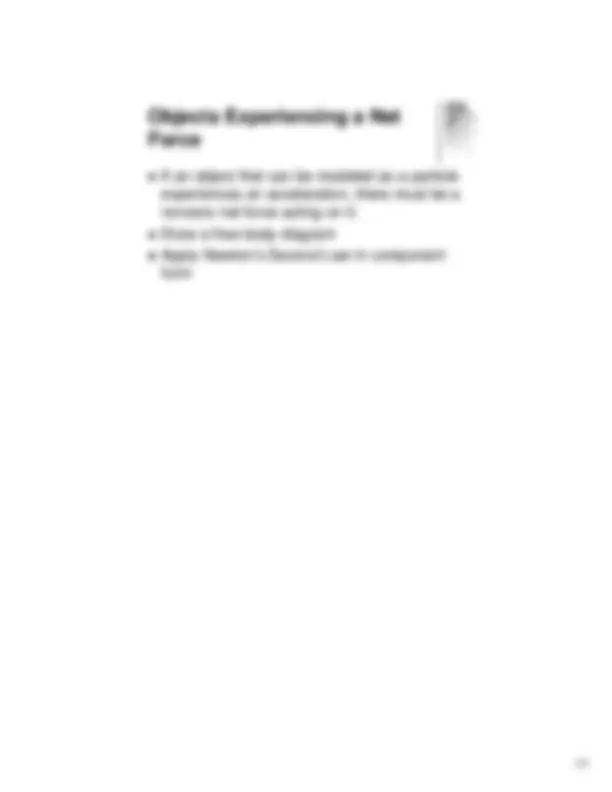


Study with the several resources on Docsity

Earn points by helping other students or get them with a premium plan


Prepare for your exams
Study with the several resources on Docsity

Earn points to download
Earn points by helping other students or get them with a premium plan
Community
Ask the community for help and clear up your study doubts
Discover the best universities in your country according to Docsity users
Free resources
Download our free guides on studying techniques, anxiety management strategies, and thesis advice from Docsity tutors
Various concepts related to the laws of motion, including the preparation of an astronaut docking with a satellite, the definition and classes of forces, inertial frames, and newton's first, second, and third laws. It includes examples and formulas for calculating satellite speed, time, and resultant forces.
Typology: Study notes
1 / 15

This page cannot be seen from the preview
Don't miss anything!










The astronaut orbiting the Earth in the Figure is preparing to dock with a Westar VI satellite. The satellite is in a circular orbit 700 km above the Earth's surface, where the free-fall acceleration is 8.21 m/s^2. Take the radius of the Earth as 6400 km. Determine the speed of the satellite. Determine the time interval required to complete one orbit around the Earth
answer: V =7630 m/s time= 97.4 min
l A force is that which causes an acceleration
l Also called total force, resultant force, or unbalanced force
l The acceleration is equal to zero l The velocity is constant
l The object, if at rest, will remain at rest l If the object is moving, it will continue to move at a constant velocity
l Any reference frame that moves with constant velocity relative to an inertial frame is itself an inertial frame
l A reference frame that moves with constant velocity relative to the distant stars is the best approximation of an inertial frame l We can consider the Earth to be such an inertial frame although it has a small centripetal acceleration associated with its motion
l In the absence of external forces, when viewed from an inertial reference frame, an object at rest remains at rest and an object in motion continues in motion with a constant velocity l Newton’s First Law describes what happens in the absence of a force l Also tells us that when no force acts on an object, the acceleration of the object is zero
l Force is the cause of change in motion, as measured by the acceleration
answer: 2.28x10-18^ N in the direction of motion.
l This is the vector sum of all the forces acting on the object
l Σ Fx = m ax l Σ Fy = m ay l Σ Fz = m az
l Note on notation: F AB is the force exerted by A on B
l Forces always occur in pairs
l A single isolated force cannot exist
l The action force is equal in magnitude to the reaction force and opposite in direction l One of the forces is the action force, the other is the reaction force l It doesn’t matter which is considered the action and which the reaction l The action and reaction forces must act on different objects and be of the same type
l The force F 12 exerted by object 1 on object 2 is equal in magnitude and opposite in direction to F 21 exerted by object 2 on object 1
l F 12 = - F 21
l In a free body diagram, you want the forces acting on a particular object
l The normal force and the force of gravity are the forces that act on the monitor
l A lamp is suspended from a chain of negligible mass l The forces acting on the lamp are l the force of gravity ( F g ) l the tension in the chain ( T ) l Equilibrium gives
∑ Fy^ =^0 →^ T^ −^ Fg =^0^ T^ = Fg
l The forces acting on the chain are T ’ and T ” l T ” is the force exerted by the ceiling l T ’ is the force exerted by the lamp l T ’ is the reaction force to T l Only T is in the free body diagram of the lamp, since T ’ and T ” do not act on the lamp
l Example 5.
l Conceptualize the traffic light
l Categorize as an equilibrium problem l No movement, so acceleration is zero
l Analyze l Need two free-body diagrams l Apply equilibrium equation to the light and find T 3 l Apply equilibrium equations to the knot and find T 1 and T 2